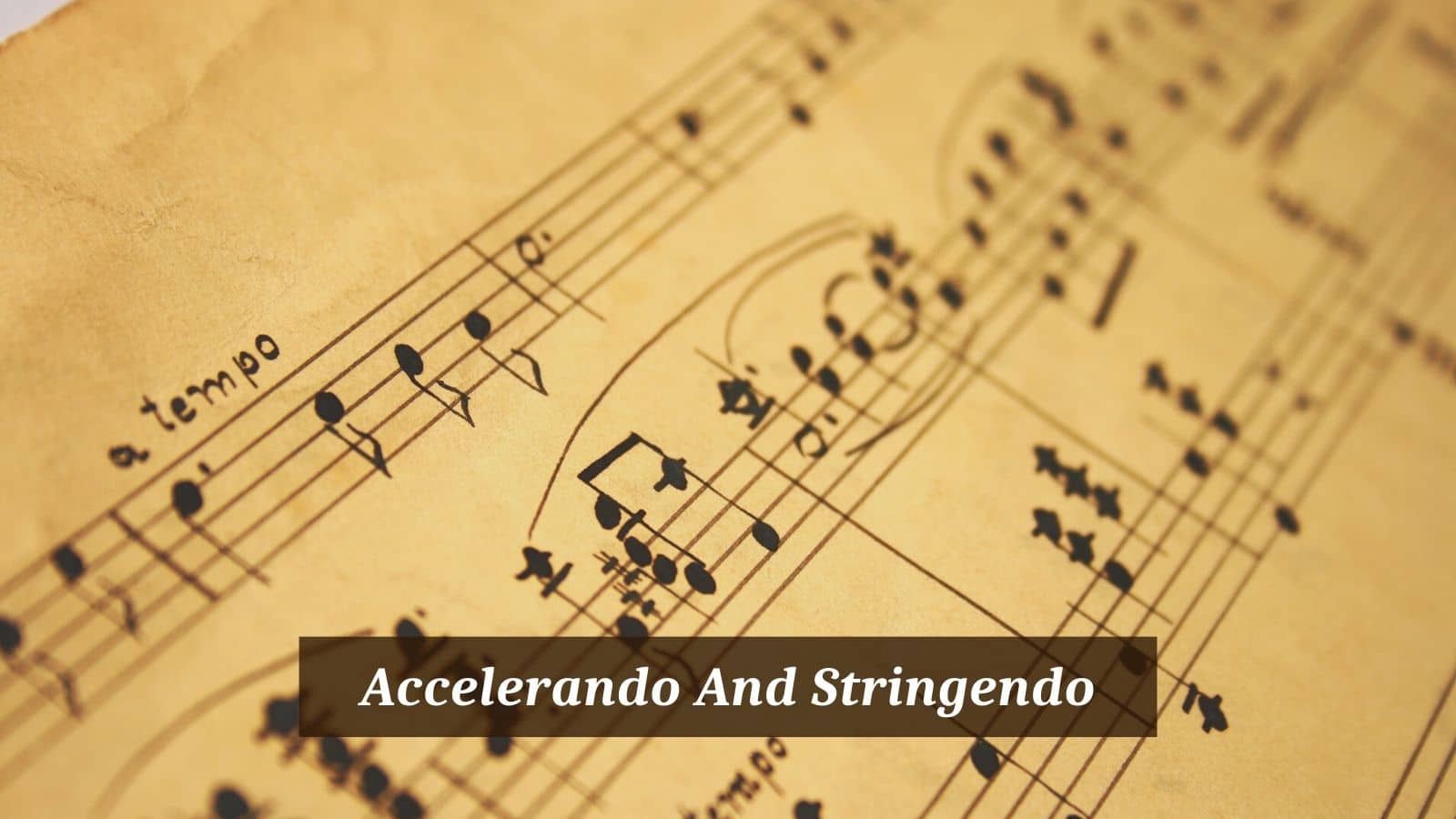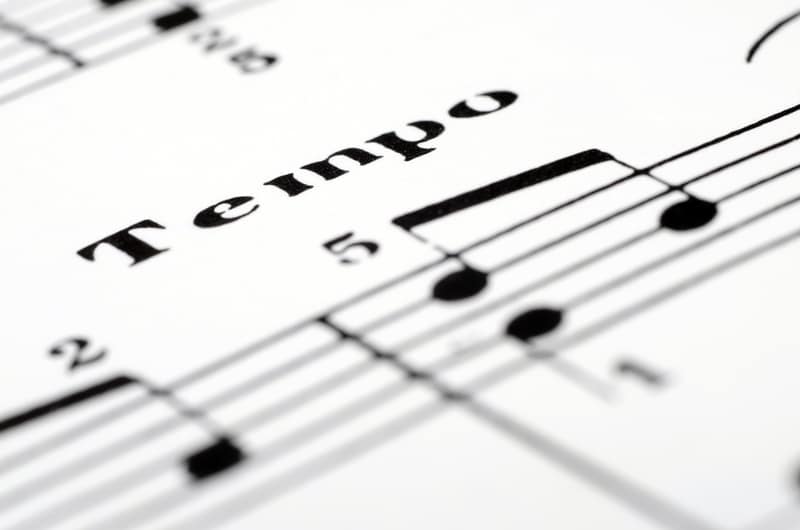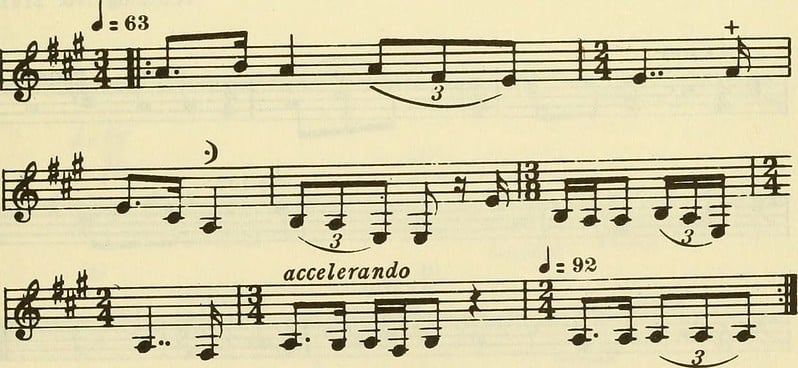
Music is littered with vocabulary. Dictionaries of music list the numerous terms that you have the option to embed into your language if you wish. Many of these terms are Italian as that wonderful country dominated the Western Cultural landscape for hundreds of years.
As culture shifted other countries left their mark on musical terminology. Now, it is understandably common practice for composers and arrangers to employ the language of their country in their compositions.
Italian remains a major language in music with the two words in the title stemming from that country.
Of the pages of musical terms, you will discover words that direct performers, some that suggest and others that are very specific. Composers, during the Romantic period, used a far greater range of terms in their scores than in the Classical Era.
Music was becoming increasingly complex and composers rightly took control of the music they were labouring to produce.
This meant, in one sense, less autonomy for the performer, but the highly emotional and expressive nature of music from this period still required significant interpretation.
One of the elements of music that utilises a large number of terms is tempo. This makes perfect sense as the tempo, or speed of a piece contributes significantly to its character.
Imagine ‘Mars’ from Holst’s Planet Suite played at half the designated speed. The whole piece would be ruined; even comical. Tempo is vital and as such composers have over time created some remarkably colourful tempi markings.
Take as an example the tempo marking for the first movement of Beethoven’s final piano sonata, No.32: Maestoso – Allegro con brio ed appassionato. The second movement has an equally extensive tempo direction: Arietta: Adagio molto semplice e cantabile.
Among all these elaborate tempo directions come the two title words; accelerando and stringendo. Both of these Italian words give performers a tempo direction.
Even though the composer usually sets the tempo and even the character of the composition at the opening, during the piece, the tempo does not necessarily remain constant.
Just the same as the dynamics, or volume of a piece change, so does the tempo. Often both dynamics and tempo alterations are to enhance or underline some kind of change in the nature of the music. It may be linked to emotion or not, but it is not uncommon for it to be felt this way.
Accelerando And Stringendo
Stringendo comes from the Latin to bind tightly. It is thought to have first been applied in a musical context in 1853. The Italian term indicates to the performer that the music should increase in speed slightly with a mounting sense of excitement or anticipation.
Sometimes performers interpret the term to include a degree of crescendo too but this is not strictly part of the direction. It is understandable though that a performer may feel this way, aiming to maximize the tension and build as the tempo changes.
Accelerando indicates to the performer to play with a slowly increasing tempo. This can be requested over a brief or longer musical duration.
In my experience, I have played or listened to many pieces where the word accelerando is used over quite an extended section, slowly gathering momentum towards a climactic moment.
What you can quickly ascertain from the definitions above is that these terms are close relatives. Close they may be, but the same they are not. It is the origin of the Italian word stringendo that for many musicians helps to clarify the muddy waters.
The idea of a tightening seems to imply a more immediately anxious state than the word accelerando. If you’re aiming for your performer(s) to increase the tempo they are playing over a passage, then accelerando would be my choice.
If, on the other hand, you wish there to be a mounting expectation in the character of the music, then stringendo would be my preferred option.
One well-known example of stringendo that I feel encapsulates its essence is in Edvard Grieg’s Peer Gynt Suite No.1; Op.46 – Final movement (In The Hall of The Mountain King).
At around bar 50, Grieg indicates the change of tempo with the words Piu vivo. This is the start of the winding up of the music towards its stupendous conclusion. Only sixteen bars later, or in some scores at rehearsal letter C, Grieg adds the direction, stringendo al Fine.
This propels the score forward, gaining speed and intensity right until the very final chord. I would suggest that a simple accelerando marking would not produce the same performance.
There is another important term to add to this mix. That is stretto. This is a technique that is commonly used in a fugue, where the distance between the entries in the parts shortens.
The effect is to build the music towards a conclusion and in a similar way to the direction stringendo, adds a touch of tightness, or nervousness to the music in that section. Stretto I have seen written in more contemporary scores clearly with the desired effect to be close to stringendo.
Whilst both terms indicate a change in tempo over a period of time, there are distinctions to be drawn. If we keep in mind the entomology of stringendo, then it is easier to play that music in the way you imagine the composer intended and avoid it becoming purely an accelerando.
Equally, as is sometimes the case, the meanings become blurred in music and the levels of interpretation vary. You may not be wrong to bring some tightness and anxiety to a piece marked with an accelerando but it is likely to be an oversight if you don’t when marked stringendo.
What is central to the understanding of the individual terms is the definition but also the music to which it applies. The period of music must be another factor to consider too.
Getting to know the composer and the piece holds the key to a successful performance and the satisfactory delivery of the composer’s intentions.


